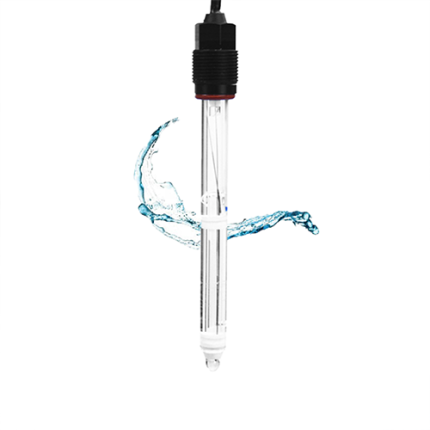Description
Overview of Shelf Management Using RFID or BLE
Shelf management systems using RFID (Radio Frequency Identification) or BLE (Bluetooth Low Energy) revolutionize inventory control and retail operations. RFID systems utilize tags with embedded microchips that communicate with readers to track items in real time, enhancing accuracy and efficiency in inventory audits. BLE-based systems leverage low-power Bluetooth signals to monitor product locations and movement, providing real-time updates and facilitating quick stock replenishment. Both technologies enable automated data collection, reducing human error and labor costs. RFID is particularly useful for high-volume environments due to its ability to scan multiple items simultaneously. BLE, on the other hand, offers ease of integration with existing smart devices and infrastructure. These systems significantly improve inventory visibility, operational efficiency, and customer satisfaction.
Applications in Shelf Management Using BLE or RFID
- Real-time inventory tracking
- Automated stock replenishment
- Loss prevention and theft detection
- Shelf space optimization
- Expiry date management
- Automated price updates
- Enhanced product visibility
- Customer behavior analysis
- Dynamic shelf labeling
- Streamlined checkouts
- Supply chain transparency
- Inventory discrepancy resolution
- Automated order fulfillment
- Stock level alerts
- Asset tracking
- Product recall management
- Sales data analytics
- Shelf layout planning
- Improved product placement
- Remote shelf monitoring
- Integration with POS systems
- Vendor-managed inventory
- Promotional effectiveness tracking
- Real-time product location
- Temperature-sensitive item monitoring
- Inventory audit automation
- Customer loyalty program integration
- Shelf restocking assistance
- Stockout prevention
- Labor cost reduction in inventory management
Technical Specifications of GAO Tek Shelf Management Using BLE or RFID
BLE Beacons or RFID Tags in Shelf Management Systems
In shelf management systems, RFID tags or BLE beacons are strategically attached to ensure optimal tracking and monitoring of inventory. RFID tags are typically affixed to individual products, packaging, or pallets. This allows for seamless integration into the inventory process from the moment goods are received to their placement on shelves. These tags can be attached using adhesives, embedded within packaging, or sewn into textile products. The strategic placement of RFID tags ensures that they are easily readable by RFID readers positioned throughout the storage area, including entrance and exit points, which facilitates real-time inventory tracking and management.
BLE beacons, on the other hand, are often installed on shelves, ceilings, or walls within the retail or storage environment. These beacons emit Bluetooth signals that can be detected by nearby devices, such as smartphones or dedicated BLE readers. By placing BLE beacons at strategic locations, shelf management systems can accurately determine the location of products, monitor customer interactions with items, and provide data for shelf layout optimization. BLE beacons are typically attached using mounting brackets or adhesive pads, ensuring they remain securely in place while transmitting signals.
Both RFID tags and BLE beacons play crucial roles in enhancing shelf management systems. RFID tags offer high-volume, multi-item scanning capabilities, ideal for environments requiring fast and accurate inventory updates. BLE beacons provide robust location tracking and customer interaction insights, making them suitable for dynamic retail spaces. Together, these technologies enable efficient inventory control, reduced labor costs, and improved overall management of shelf space and product availability, significantly boosting operational efficiency and customer satisfaction.
BLE Gateways or RFID Readers in Shelf Management Systems
In shelf management systems, the installation of RFID readers and BLE gateways is critical for ensuring comprehensive and efficient inventory monitoring. RFID readers are typically installed at key points throughout the retail or warehouse environment to maximize coverage and accuracy. These readers are often placed at entry and exit points to track the movement of goods in and out of storage areas. Additionally, they are mounted on ceilings, walls, or shelving units to scan tagged items as they are stocked, moved, or sold. This strategic placement allows for continuous real-time inventory updates and helps in quickly identifying any discrepancies.
BLE gateways, on the other hand, are installed to create a network that can communicate with BLE beacons attached to products or shelving units. These gateways are usually placed at regular intervals throughout the facility to ensure a strong and consistent signal range. Ceiling-mounted or wall-mounted installations are common, providing a wide coverage area that captures signals from multiple beacons. This setup allows for precise location tracking of products and customer interactions within the store.
Both RFID readers and BLE gateways are connected to the store’s network infrastructure, enabling seamless data transmission to the central management system. This integration ensures that inventory data is updated in real-time, providing accurate stock levels and facilitating automated restocking processes. The choice of placement and the density of readers and gateways depend on the specific requirements of the shelf management system, such as the size of the area, the volume of products, and the level of detail needed for inventory tracking. Properly installed, these technologies enhance inventory accuracy, reduce labor costs, and improve overall efficiency in managing shelf space and product availability.
Cloud Systems
GAO Cloud BLE or RFID Systems consist of the following parts:
GAO BLE Gateways and Beacons and RFID Readers and Tags
BLE or RFID Cloud, Server, PC & Mobile
GAO Cloud Services Engine for BLE or RFID
Cloud Infrastructure, RFID & BLE Middleware, Data Analytics and Business Intelligence, and Security Measures.
Integration APIs
APIs enable seamless integration between the BLE or RFID solution and existing shelf management systems such as POS, inventory management, and e-commerce platforms, allowing for data exchange and synchronization.
Server, PC & Mobile Systems
GAO Server, PC & Mobile BLE or RFID Systems are composed of
BLE Gateways and Beacons, RFID Tags and Readers
GAO Server, PC & Mobile Software Engine for BLE & RFID
Servers, PCs, Mobile Computing Devices and Infrastructure, Middleware Software, and Database Management System.
Integration with Shelf Management Systems
The server, PC and mobile solution integrates with existing shelf management systems such as inventory management, point-of-sale (POS), and enterprise resource planning (ERP) systems. Integration is achieved through APIs, database connections, or middleware adapters, enabling seamless data exchange and synchronization.
All GAO’s RFID products are jointly offered by GAO Tek Inc. and its sister company GAO RFID Inc., ranked as a top 10 global RFID and IoT supplier. For RFID products on https://gaotek.com/, please visit RFID-BLE category, and its sub-categories: BLE Gateways, Beacons & Accs, UHF Readers, Tags & Accs, NFC & HF Readers, Tags & Accs, LF Readers, Tags & Accs, and BLE or RFID Cloud, Server, PC & Mobile.
You also are encouraged to visit gaorfid.com that offers a more comprehensive, more complete and different set of BLE & RFID products: BLE, RFID Readers, RFID Tags, Antennas & Accessories, RFID Systems, System By Feature.



